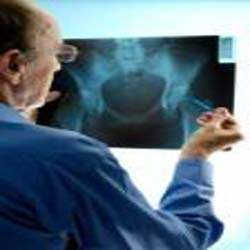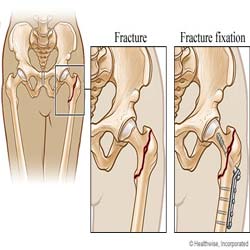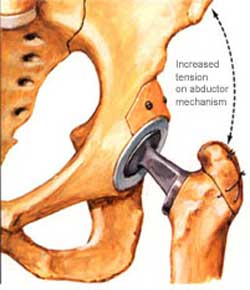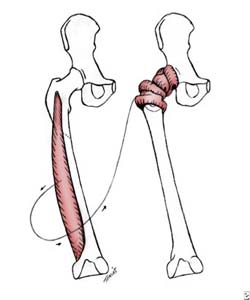Hip Surgery in India
Overview:
 Hip surgery is one of the most common procedures performed by orthopedic surgeons. Hip Surgery is often useful in restoring mobility, as well as relieves pain. The hip surgery may be necessary to correct any type of physical defect that has developed, or to repair damage caused by an accident of some kind. There are several different types of hip surgery that are commonly used today, ranging from repairs to a full hip replacement surgery. In the US alone, more than five lakh different Hip surgery procedures are performed annually.
Hip surgery is one of the most common procedures performed by orthopedic surgeons. Hip Surgery is often useful in restoring mobility, as well as relieves pain. The hip surgery may be necessary to correct any type of physical defect that has developed, or to repair damage caused by an accident of some kind. There are several different types of hip surgery that are commonly used today, ranging from repairs to a full hip replacement surgery. In the US alone, more than five lakh different Hip surgery procedures are performed annually.
What is Hip Surgery?
His Surgery is a procedure which deals with hip fractures, disorders and diseases which commonly require surgery to fix the medical ailment. The type of surgery depends upon the location of the ailment or disorder within the hip. The underlying health of the patient needs to be assessed, and the risks of general anesthesia need to be considered before deciding any procedure of Hip Surgery.
Purpose of Hip Surgery:
 The most common reason for Hip Surgery and any other procedures is osteoarthritis. Osteoarthritis ultimately leads to deterioration of cartilage and bone, resulting in pain and in some cases total loss of mobility. Other forms of arthritis that resist pain management treatments and lead to degeneration of the hip joint may require hip surgery as well. Individuals with hip fractures may also benefit from hip surgery. Those with suppressed immune systems, heart disease and overall poor health may not be candidates for hip surgery and should discuss treatment options and risks with their doctor.
The most common reason for Hip Surgery and any other procedures is osteoarthritis. Osteoarthritis ultimately leads to deterioration of cartilage and bone, resulting in pain and in some cases total loss of mobility. Other forms of arthritis that resist pain management treatments and lead to degeneration of the hip joint may require hip surgery as well. Individuals with hip fractures may also benefit from hip surgery. Those with suppressed immune systems, heart disease and overall poor health may not be candidates for hip surgery and should discuss treatment options and risks with their doctor.
Causes for Hip Surgery:
For people suffering from pain in the hip joint or dysfunction of the hip joint, the Total Hip Replacement Surgery is an efficient option which helps to relieve pain in more than 90% of patients. The surgeons advise hip replacement to the patients suffering from:
- Osteoarthritis:it is one of the most common reasons for hip implant. Osteoarthritis commonly occurs after middle age and results into chronic damage of the cartilage in the joints. The old age people are generally advised Cemented Total Hip Replacement.
- Rheumatoid and other types of Arthritis:the patients suffering from damaged hip joint due to a chronic autoimmune disease and marked deformities, Ankylosing Spondylitis require hip replacement.
- Replacement of a broken or Infected Hip:the fractured hip also is a reason for hip surgery.
- Revision Hip Surgery:an old surgery going ineffective at times requires another hip surgery
Types of Hip Surgery:
There are several different types of Hip surgery that are commonly employed today, ranging from repair to a full hip replacement. Some forms of hip surgery are aimed at repairing fractures somewhere on the hipbone. The following are the major types of Hip Surgery:
- Arthroscopy:This is a procedure that can be done to remove any loose bodies or repair damaged cartilage in the hip joint. With this procedure, a small flexible camera, known as an arthroscope is inserted into the joint to help visualize the damage. The arthroscope can also be used to repair and remove damaged tissue. This sort of surgery is typically only used for patients with hip arthritis. These come in different types of like hemi Hemi-arthroplasty and Full-arthroplasty.
- Osteotomy:An Osteotomy is a surgical procedure in which the hip joint is cut and reshaped. It works particularly well for patients who are having hip problems due to an unusually shallow hip joint, which is also known as hip dysphasia. The bones are cut and then realigned to improve the stability of the joint. This procedure can help relieve pain and can delay the need for a replacement hip.
 Internal Fixation:An Internal fixation is a surgical procedure which is used to treat fractures. Internal fixation is an option if, after the fracture, the bones are still aligned properly. With this procedure metal screws are placed into the joint to hold the bones in place while they heal. Special nails, known as bone or gamma nails may also be inserted to provide additional support
Internal Fixation:An Internal fixation is a surgical procedure which is used to treat fractures. Internal fixation is an option if, after the fracture, the bones are still aligned properly. With this procedure metal screws are placed into the joint to hold the bones in place while they heal. Special nails, known as bone or gamma nails may also be inserted to provide additional support- Compression Screws:If a fracture occurs along the head of the femur int he hip joint, compression screws can be placed across the fracture. The screw is attached to a plate which is oriented to run along the femur, which is secured with other screws. As the bones heal, the screw keeps the edges of the fracture pressed together, which ensures that the edges grow together. Gamma nails may be placed along with the compression screws to prevent sliding and give more stability to the joint as it heals.
 Replacement:Severe hip damage may require joint replacement surgery. With joint replacement surgery, the damaged joint is cut out and removed and prosthesis, made up of metal and/or plastic is put in its place. These artificial joints are designed to provide similar stability and range of motion as the natural joint, but they can wear down after many years and may need to be replaced periodically.
Replacement:Severe hip damage may require joint replacement surgery. With joint replacement surgery, the damaged joint is cut out and removed and prosthesis, made up of metal and/or plastic is put in its place. These artificial joints are designed to provide similar stability and range of motion as the natural joint, but they can wear down after many years and may need to be replaced periodically.
Preparing for Hip Surgery:
You've been advised to have Hip Surgery. Before the surgery you want to find out as much as you can about the procedure and what to expect in the post-operation phase of the hip replacement. Your surgeon will be able to prescribe you a lifestyle change, and advice on how to adapt to it. Here are some steps to learn how and what to ask your surgeon before your Hip Surgery:
- Schedule a pre-operation physical to meet with your regular doctor before the surgery. This is usually standard procedure, and your doctor should have you book an appointment a few days before the operation to go over any final questions and concerns you have.
- Research the procedure so you can learn about it in layman's terms before you talk to your doctor. You can ask someone you know who has had the procedure how it was performed on them. Hip Surgery usually leaves a person with a 12 to 18 inch scar. There is a less invasive method which will leave a smaller scar, promote a quicker recovery time and a shorter hospital stay.
- Gather questions from your research. Compile a list of questions to bring to your pre-operational physical, and don't hold back. You want to know everything about the procedure, because it's going to be a part of the rest of your life.
- How long does the procedure take?
- How long until you will be able to walk, lift and bend?
- What are the possible complications?
- Will I need to donate my own blood before the surgery?
- Be specific with your questions and don't be shy. You want to know exactly how the procedure will be done, what your new hip will look like, the rate of success for the operation, what activities you will be able to do, how long you are likely to need to recover, warning signs of problems and anything else you should expect.
- Ask your doctor who the surgeon is, and find out the surgeon's qualifications. Ask how many hip replacement surgeries the surgeon has performed and their success rate. Have faith that the surgeon is qualified to perform the operation, but getting to know him or her before the surgery might relieve some of your concerns.
- Write down all the information you obtained, and review it before your surgery to make sure you know what you are likely to encounter after the procedure. This will help you put to rest your concerns and make you think of more questions, if necessary.
Common Procedures for Hip Surgery:
The following are the common procedures which are adopted under Hip surgery:
- Hip Osteotomy: A Hip Osteotomy is a surgical procedure in which the bones of the hip joint are cut, reoriented, and fixed in a new position. Healthy cartilage is placed in the weight-bearing area of the joint, followed by reconstruction of the joint in a more normal position. A Hip Osteotomy is performed under general anesthesia. Once the patient has been anesthetized, the surgeon makes an incision to expose the hip joint. The surgeon then proceeds to cut away portions of damaged bone and tissue to change the way they fit together in the hip joint. This part of the procedure may involve removing bone from the femoral head or from the acetabulum, allowing the bone to be moved slightly within the joint. By changing the position of these bones, the surgeon tries to shift the brunt of the patient's weight from damaged joint surfaces to healthier cartilage. He or she then inserts a metal plate or pin to keep the bone in its new place and closes the incision.
 Total Hip Replacement: Hip replacement is perhaps the most common joint replacement surgery. It is considered in patients with progressive arthritis that affects the patient's ability to do daily activities. Hip resurfacing is an alternative to hip replacement. The choice of procedure is a joint decision made by the orthopedic surgeon and patient to be able to return the patient to the level activity that they would like to achieve. Hip replacement surgery can be performed traditionally or by using what is considered a minimally-invasive technique. The main difference between the two procedures is the size of the incision. During standard hip replacement surgery, you are given general anesthesia to relax your muscles and put you into a temporary deep sleep. This will prevent you from feeling any pain during the surgery. A spinal anesthetic also may be given to help prevent pain. You will likely stay in the hospital for four to six days and may have to stay in bed with a wedge-shaped cushion between your legs to keep the new hip joint in place.
Total Hip Replacement: Hip replacement is perhaps the most common joint replacement surgery. It is considered in patients with progressive arthritis that affects the patient's ability to do daily activities. Hip resurfacing is an alternative to hip replacement. The choice of procedure is a joint decision made by the orthopedic surgeon and patient to be able to return the patient to the level activity that they would like to achieve. Hip replacement surgery can be performed traditionally or by using what is considered a minimally-invasive technique. The main difference between the two procedures is the size of the incision. During standard hip replacement surgery, you are given general anesthesia to relax your muscles and put you into a temporary deep sleep. This will prevent you from feeling any pain during the surgery. A spinal anesthetic also may be given to help prevent pain. You will likely stay in the hospital for four to six days and may have to stay in bed with a wedge-shaped cushion between your legs to keep the new hip joint in place.- Hemi-Arthroplasty: This procedure is, as its name implies, hemi, or "half" of an arthroplasty. This procedure is usually performed as treatment for a hip fracture where there is no chance of salvaging the femoral head, due to irreparable damage to the blood supply, yet the patient's acetabulum (socket) is in good condition, and not in need of a prosthetic cup implant. The fractured femoral head is removed, and sized for selection of a corresponding head implant. The femur bone canal is opened, and reamed to accommodate a prosthetic stem. These parts are either cemented into place, or "press-fit" to stimulate bone in-growth into the prosthesis. It is a very stable combination, and allows for early mobilization of the typical elderly patient to reduce the risks of other medical complications.
- Hip Resurfacing: Hip resurfacing is done in an attempt to preserve existing bones. Resurfacing involves capping the existing ball joint with a metal covering to improve range of motion and mobility. As in other hip replacement surgeries, a rod is inserted into the femur and capped with a metal ball joint replacement. Unlike other surgeries, hip resurfacing does not require removal of the top of the femur. The bone is reshaped and the ball cap is fitted over the existing bone. This procedure is done more often in younger patients and those without major bone loss. Hip resurfacing surgery is a possible consideration for patients with severe hip arthritis. Hip resurfacing has been recommended to patients who are younger, and may face multiple surgeries over the course of their lifetime.
 Girdlestone: In some patients, typically ones with severe mental and physical handicaps such as cerebral palsy, hip fractures occur due to spastic movement of the leg(s), or even from positioning them in bed by caregivers. The typical candidate for a Girdlestone procedure is one who does not walk at all, and will never walk. The procedure is done to relieve pain, and to improve quality of care. The procedure involves the complete removal of the fractured head and proximal (nearest the hip) portion of the femur; to the extent it is involved. The end of the bone is covered with muscle to provide a cushion between the femur and the socket. This creates a form of "soft" joint or "false" joint, and cannot tolerate weight-bearing.
Girdlestone: In some patients, typically ones with severe mental and physical handicaps such as cerebral palsy, hip fractures occur due to spastic movement of the leg(s), or even from positioning them in bed by caregivers. The typical candidate for a Girdlestone procedure is one who does not walk at all, and will never walk. The procedure is done to relieve pain, and to improve quality of care. The procedure involves the complete removal of the fractured head and proximal (nearest the hip) portion of the femur; to the extent it is involved. The end of the bone is covered with muscle to provide a cushion between the femur and the socket. This creates a form of "soft" joint or "false" joint, and cannot tolerate weight-bearing.
Go to the Enquiry Form
Phone Numbers Reach Us
India & International : +91-9860755000 / +91-9371136499
UK : +44-2081332571
Canada & USA : +1-4155992537
Recovery after Hip Surgery:
Recovery from any of the type of Hip Surgery may take several months to a year, depending on the type of surgery involved and the patient's overall health and age. Full recovery from hip Recovery after Hip Surgeryresurfacing is usually shorter than replacement surgery and full mobility is expected within two to three months of the procedure. In the first six weeks following all three surgeries, individuals will have very limited mobility and normal daily activities such as driving should be avoided until their doctor approves increased activity. Physical therapy after hip surgery is shown to speed the recovery process and increase strength and mobility.
Alternatives to Hip Surgery:
There are other operations that can be useful in treating hip disease:
- Hip fusion (Arthrodesis): was frequently performed before the era of hip replacement. The hip ball is fused to the pelvis. This is a single-operation, permanent-cure for the painful hip. Lost hip motion is made up by extra movement of the knees and spine. You must have a normal spine, normal knees, and a normal opposite hip for Arthrodesis to be even considered. Few people today will accept the inconvenience of a stiff hip joint. It is usually only offered to very young people whose work involves heavy manual labor.
- Femoral Hemiarthroplasty: (“half a hip replacement”) is sometimes offered to younger patients, when the hip ball is damaged, but the socket cartilage is normal, such as in patients who have osteonecrosis (see Introduction to Hip Disease). The socket is not replaced. The femur component is similar to that of a total hip replacement, but it has a large ball, sized to fill the socket. The metal ball moves directly against the socket cartilage, which can wear out and become painful, requiring a second operation to install an artificial socket. These are usually displaced fractures of the neck of the femur (see figure below). The implant is almost always cemented for hip fractures, except in patients under 65 or so, depending again on bone quality.
- Core Biopsy: It involves removing a core of bone about one quarter-inch in diameter from the femoral head using a coring device. It is used in the earliest stages of osteonecrosis (see Introduction to Hip Disease) in the hope that it will allow the blood supply to return to the femoral head. Some doctors report 85% success rate with this procedure, but generally the results are much less optimistic. Because there is a danger of fracturing the weakened bone, patients have to be on crutches for six weeks. If the procedure is unsuccessful, you will almost certainly need a hip replacement.
Hip Surgery in India:
The Hip Surgery is a success story that has enabled thousand of global patients from all over the world to live fuller and more active lives. The Indian orthopedic surgeons can replace a painful dysfunctional joint with a highly functional, long- lasting prosthesis. Over the past half- century Hip Surgery in India has been very successful rendered with best services with quality of international benchmark.
 The Orthopedic surgeons and doctors in India provide cost effective Hip Surgeries at hospitals (accredited by JCI and other quality assurance groups) which are one of the finest medical centres in the world. The patients receive the scrupulous healthcare and free consultation services and the final surgery performed with no delays.
The Orthopedic surgeons and doctors in India provide cost effective Hip Surgeries at hospitals (accredited by JCI and other quality assurance groups) which are one of the finest medical centres in the world. The patients receive the scrupulous healthcare and free consultation services and the final surgery performed with no delays.
They are trained and worked in some of the prestigious medical centres in the developed nations. They have a good success rate and are world renowned medical professionals known to cater service both India and abroad. The Hip Surgery in India is available at various hospitals in the following cities with latest amenities and state-of-art-facilities.
| Mumbai | Hyderabad | Kerala |
| Delhi | Pune | Goa |
| Bangalore | Nagpur | Jaipur |
| Chennai | Gurgaon | Chandigarh |
And besides, India has world heritage places and exotic beaches, where the patients can rejuvenate while they recover following any orthopedic surgery.
The Cost of Hip Surgery in India:
Significant cost difference is the key in bringing patients all across the world for Hip Surgery in India. India is not only cheaper but offers quality service in terms of treatment and service. Cost is often the deciding factors for international patients coming for any Hip Surgery in India.
| Procedure | USA ($) | India ($) |
| Hip Replacement Surgery | 51,000 | 7,200 |
| Hip Resurfacing | 55,000 | 7,800 |
| Hip Arthroscopy Surgery | 28,000 | 3,000 |
Go to the Enquiry Form
Phone Numbers Reach Us
India & International : +91-9860755000 / +91-9371136499
UK : +44-2081332571
Canada & USA : +1-4155992537
Some of the common countries from which patients travel to India for surgery are:
| USA | UK | Canada |
| Australia | New Zealand | Nigeria |
| Kenya | Ethiopia | Uganda |
| Tanzania | Zambia | Congo |
| Sri Lanka | Bangladesh | Pakistan |
| Afghanistan | Nepal | Uzbekistan |
ABOUT INDIA
Located in South Asia, bordered by Pakistan, Nepal, China and Bangladesh, India is South Asia's largest, sovereign, democratic republic. India has an edge over other countries when it comes to offering comprehensive, cost-effective and timely medical care: it also offers an exotic, adventure-filled or cultural -if you wish array of destinations to discover and revel in for the travelers. Indian cities like Mumbai, Hyderabad, Goa, Bangalore, Nagpur, Kerala, Delhi, Pune, Jaipur, Chennai, Gurgaon, and Chandigarh offers best medical tourism service.
- Mumbai -Mumbai, formerly known as Bombay in English, is the capital of the Indian state of Maharashtra. This port city (India's largest and busiest) accounts for a major share of the government's revenue, and has one of the world's largest harbour. There are many things to love about Mumbai. One is simply the geographical names, like The Queen's Necklace and Elephanta Island, all with roots in the British Empire.
- Hyderabad -Also known as City of Nizams. The city of Hyderabad has its own individual character, which is evident in the beautiful, ancient palaces and the equally modern, and state-of-the-art offices and buildings. Medical tourism at hospitals in Hyderabad combines care for your health with international tourism. The primary reason behind its surging popularity is better healthcare services at an affordable budget.
- Goa - Popularly known as the ‘Rome of the East’, Goa boost of natural, magnificent churches and exquisite works of man. Plunge into the clear blue water of the large pool, or soak in the blissful sunshine on the picturesque island. Goa is an interesting location for getting your health propped up and getting those long postponed surgeries done. You have modern facilities, short waiting times and very affordable prices for procedures, hospital services and medicines.
- Bangalore -The progressive and modern city of Bangalore is the state capital, being located within India's Karnataka state. Bangalore is often referred to as the country 'Garden City', due to its high concentration of parks and green spaces. Bangalore has few of the world’s best doctors and medical practitioners, who have been trained by the rigorous Indian medical education system as well as in countries like UK and USA.
- Nagpur -Nagpur City has many distinctions. It is also the second greenest in India and is located at the very center of the heartland, almost equidistant from Kolkata, Chennai and New Delhi and Mumbai. The present city was founded in the early 18th century by Bhakt Buland, a Gond prince of the kingdom of Deogad in the Chhindwara district. The Nagpur District has a varied culture, as well as being in the central part of India, the market in Nagpur is flooded with products from all over India. Nagpur has few of the world’s best doctors and medical practitioners, who have been trained in countries like UK and USA.
- Kerala - Natural beauty, clean air and primordial greenery amidst the vast expanse of water and sky, typifies the state of Kerala – better known as God's own country. Kerala is famous for its alternative medical therapies such as Ayurveda, which help to rejuvenate and revitalize the body. The region is also home to India’s only virgin tropical rain forest – the Silent Valley National Park, supporting an overwhelming range of life forms, many of which are highly endangered, and endemic to this part of the planet.
- Delhi - Natural beauty, clean air and primordial greenery amidst the vast expanse of water and sky, typifies the state of Kerala – better known as God's own country. Kerala is famous for its alternative medical therapies such as Ayurveda, which help to rejuvenate and revitalize the body. The region is also home to India’s only virgin tropical rain forest – the Silent Valley National Park, supporting an overwhelming range of life forms, many of which are highly endangered, and endemic to this part of the planet.
- Delhi -Welcome to The Capital City of India - New Delhi" Delhi is famous as Capital city of India is located in North India. Delhi is truly a symbol of the old and the new; a blend of ancient well preserved monuments and temples along with jam-packed burger joints and up market shopping malls. Delhi has state of the art Hospitals and the best qualified doctors.
- Pune - Once referred to as the Oxford of the east, Pune continues to be a stronghold for academics and culture. An array of factors like availability of efficient and experienced doctors, comparatively low treatment costs, hospital facilities of international standards and many more have made Pune one of the top destinations for medical tourism.
- Jaipur - Jaipur is one of the most popular destinations on a tourist's itinerary. The magnificent forts, beautiful havelis and colourful bazaars make Jaipur a popular tourist destination among tourists. Jaipur has pioneered health and medical tourism in India.
- Chennai - Chennai is one of the most developed urban centers in the Indian subcontinent. The city forms the capital of Tamil Nadu state and is the fourth largest metropolitan city in India. They have some of the very best hospitals and treatment centers in the world. Each hospital is equipped with state of the art facilities. The technology brought into practice is the very latest, including robotic surgery.
- Gurgaon - Located in the National Capital Region, Gurgaon is one of the most rapidly growing cities in Greater Delhi. In the last few years Gurgaon has boomed as the hub of IT and other new-age businesses. Gurgoan is the latest destination for Medical Tourism in India as it is the latest modern upcoming city near Delhi.
- Chandigarh - Located near the foothills of Shivalik range of the Himalayas, Chandigarh is one of the most beautiful and happening cities of India. Chandigarh has great potential for Medical tourism as the unpolluted and excellent environs give many opportunities to patients to recover from their illness.
Go to the Enquiry Form
Phone Numbers Reach Us
India & International : +91-9860755000 / +91-9371136499
UK : +44-2081332571
Canada & USA : +1-4155992537
Below are the downloadable links that will help you to plan your medical trip to India in a more organized and better way. Attached word and pdf files gives information that will help you to know India more and make your trip to India easy and memorable one.
hip surgery India, hip surgery, low cost hip surgery India, low cost hip surgery, hip surgery low cost India, causes hip surgery, types hip surgery, common procedures hip surgery, recovery hip surgery, benefits low cost hip surgery India,
 Apollo Hospital
Apollo Hospital Fortis Hospital
Fortis Hospital Artemis Hospital
Artemis Hospital
 Medanta Hospital
Medanta Hospital



 Jaslok Hospital
Jaslok Hospital Lilavati Hospital
Lilavati Hospital

 Global Hospitals
Global Hospitals Jupiter Hospital
Jupiter Hospital













